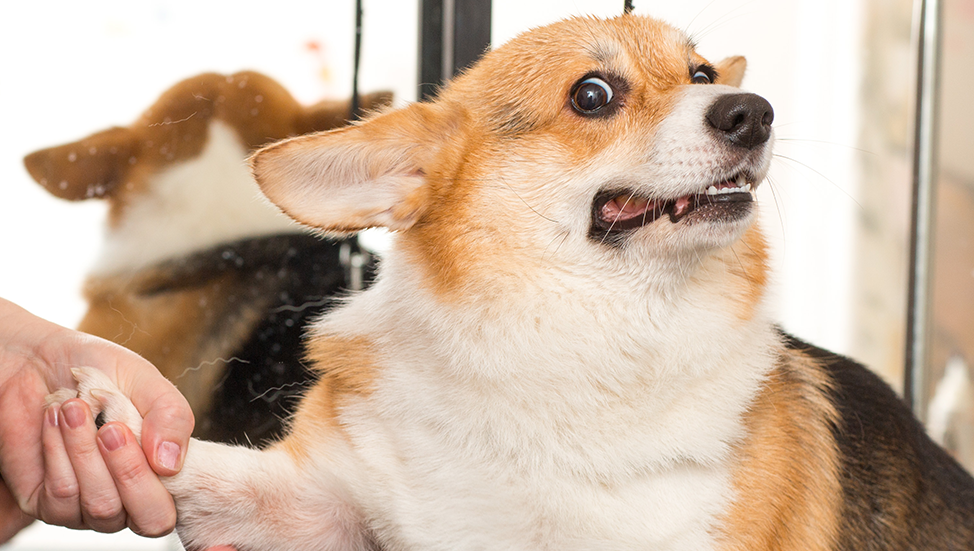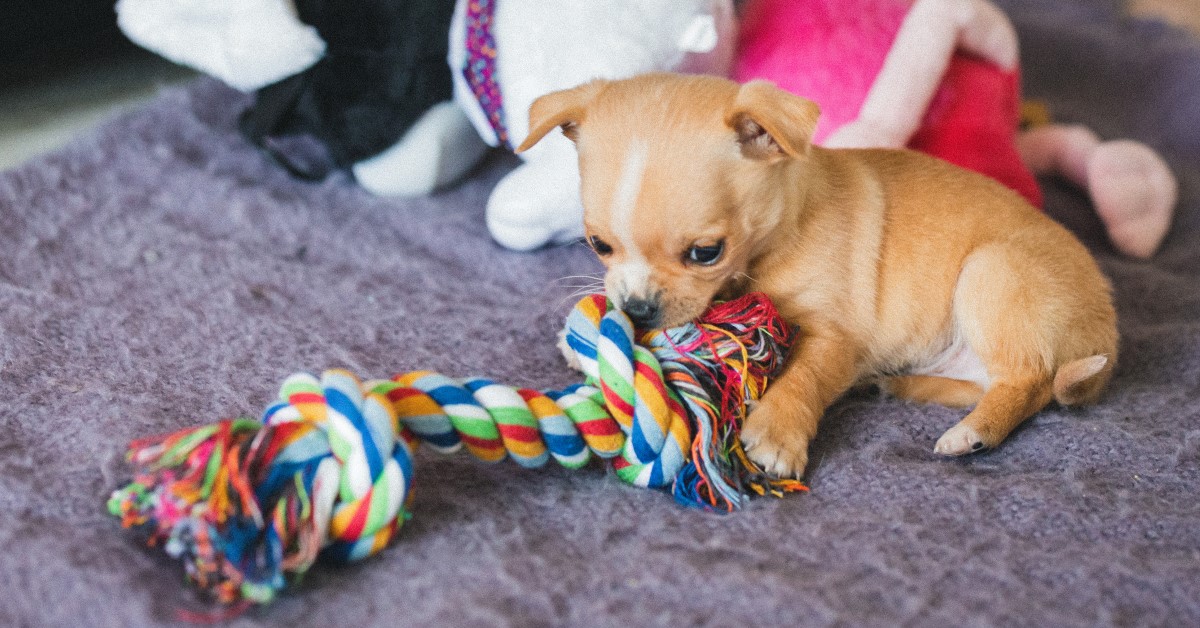Help Your Fearful Dog Feel Safe
Help your dog beat its anxiety by learning its triggers and using safe training tools to give them and yourself the skills necessary to overcome any fear.

Whether you adopted a dog or raised one from a puppy, fear and lack of confidence are common struggles for dogs. Although it’s reassuring to know you’re not alone, fear based behavior can have negative effects on the lifestyle and health of both dog and owner, and is best if corrected as quickly as possible.
Anxiety in a dog can stem from a previous negative encounter, a poor living situation, a history of abuse, or a lack of socialization. However, even if you can identify the cause of your dog’s anxiety, that’s just the first step in the road to recovery.
Properly correcting anxiety and fear in a dog takes consistent hands on training. I know, this probably feels overwhelming at first, but I assure you, the journey to a happy pup is the same journey towards a happier you! It is well worth the time and effort. So- how can you help? Sit. Stay. And get to know the causes, signs, and solutions.
Causes
Common causes of fearfulness and anxiety are:
- A bad encounter (attacked by another dog)
- Previous abuse – common in young to old age dogs who were adopted, with little-known history
- Genetic predisposition. Some dogs are just born anxious, the same way humans seem to be predisposed to anxiety.
- Poor socialization
Some dogs fear other dogs, some fear men, some fear environments- but when multiple stimuli are happening at once, say a man walking his dog outside, it can be hard to identify triggers. So, how can you help your dog if you can’t tell what exactly it’s fearful of? You’ll want to expose your dog to various controlled situations while paying close attention to their response in each scenario. This way, you’ll be able to narrow down and hone in on what triggers your dog.
Identifying Triggers
Like humans, all dogs are different. Dogs can have the same fears but different reactions, or the same reactions but to different fears! Whatever the case may be for you furry-friend, it’ll likely include a combination of these behaviors:
- Hiding behind you or people they feel safe around
- Showing aggression like: growling, lunging, barking, showing teeth
- Excessive urinating
- Uncontrollable shaking
- Averting their gaze/not making eye contact
Understanding the body language expressed by your dog when they are fear or anxiety ridden is a vital step in the recovery process. Without knowing the signs, an owner can’t successfully nip fear in the bud quick enough to redirect their dog’s immediate response. So, don’t rush this process. Once you know the ins and outs of your dog’s fear response, you can then move on to helping them overcome their triggers.
Helping your dog overcome fear
If any of the management tools below don’t help your dog immediately, don’t let that discourage you. As with any training, behavioral and cognitive correction will take time. This is not a “one and done” situation. Your pet is a part of the family, and you’ll want to do everything you can to help them feel safe and confident as they face the world at your side. Here are some ways to do that:
Be a Source of Security
You may notice that your pet looks at you to check in from time to time. This is because your dog is using your body language as a way to gauge the situation around them. Is it safe or not? Knowing this as the pack leader, you’ll want to remain as calm as possible throughout the entire training process. Dogs are empathetic creatures and can feel our emotions. Therefore, you’ll want to exude calm, positive energy, in the hopes that your dog will catch on!
This idea of checking in with eye contact can be a great tool in combatting reactivity. When you notice the start of symptoms, get your dog to take its eyes off the triggering situation and make eye contact with you instead. The goal here is to train your dog to check in with you whenever they feel anxious, and in turn, get them to stop noticing and reacting to triggers. Be sure to give a treat, or some kind of positive reinforcement, each time your dog looks at you! Even if there is no triggers around, reward your dog for keeping his or her attention on you and not the environment.
Train, Train, and Train Some More
Even if your dog is well-behaved, training is an important part of a healthy lifestyle. Teaching your dog commands as simple as, “sit,” “stay,” and “come,” are not only useful to you, but they create confidence in your pup. Dogs typically aim to please and be of service, so giving them an outlet to do so feels incredibly rewarding to them! And just like in humans, it’s equally important to exercise your dog’s mind as it is its body.
Training can be one-on-one at home or you can look into sessions with a professional. Attending sessions as little as twice a month, and practicing regularly outside of your sessions, will make a big improvements in your pups temperament and confidence.
Create Safe Spaces
You may have heard about crate training before. It’s a controversial subject when it comes to owning a pet. Some owners feel it’s cruel to keep their dog locked up for any period of time in a crate. Others feel it’s an integral part of having a dog in the family.
The benefit of crate training is that, if done correctly, the crate will become your dog’s personal space. They’ll see it as a place to go lay down when they need some alone time or rest. If you’re not comfortable with crate training, try to replicate this environment by creating a space for your dog in your home. An area where they have a bed, toys, blankets, etc. can make them feel more comfortable, especially if it’s in the spot they typically choose to go when they’re feeling anxious and need to calm down.
Team Up
Having a fearful dog can make getting to know other dogs and their owners hard. However, teaming up with someone who has a confident dog can help show your dog the way to beating fear and anxiety. In the same way your dog looks to you for reassurance and empathizes with your emotions, your dog may pick up on the energy of a more comfortable dog and realize there is nothing to fear!
The best way to do this is to start off with short walks. If your dog is uncomfortable with other dogs, practice distanced walks – for example, walking parallel across the street from one another. As they become more and more comfortable, you can slowly close the distance between you and your friend.
Don’t Force It
Lastly and most importantly, don’t force your dog into anxiety-inducing situations. Doing so will only create more fear. Be patient, be slow, be steady. Overcoming fear and anxiety doesn’t happen overnight. With a little attention, training, and compassion, you can help your dog overcome their fears and live a happy, comfortable life together.
Ready to start saving money on pet wellness care?
Then take a look at Mint Wellness, the pet wellness plan that provides fast reimbursement on routine pet care. Save on vaccinations, wellness exams, preventatives, dental, and more!
Learn More


